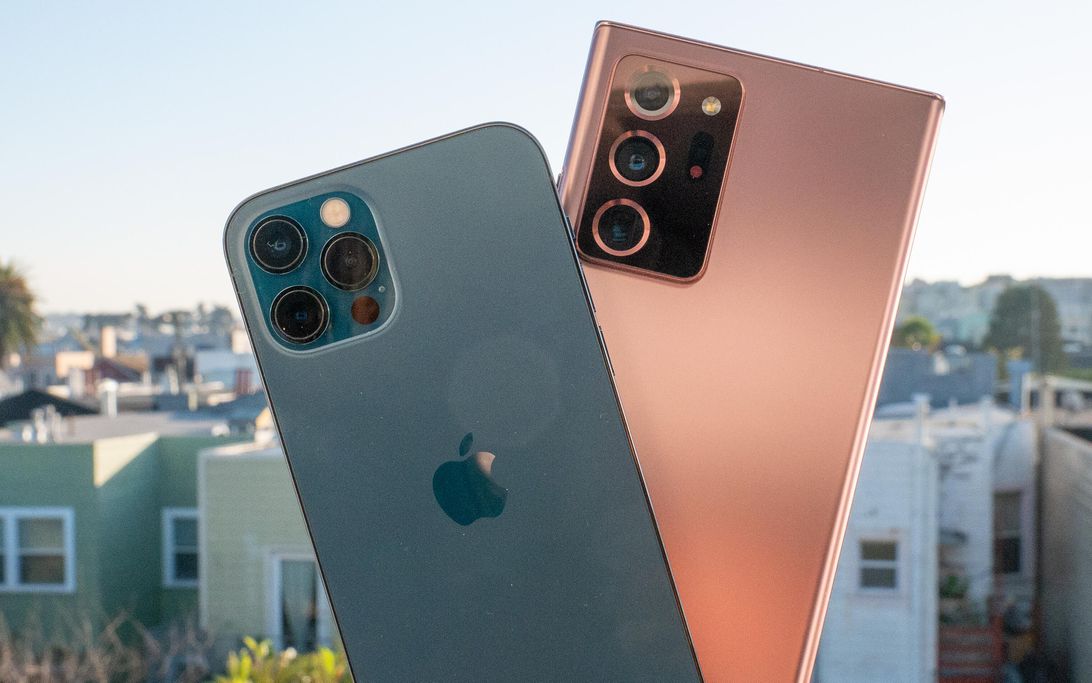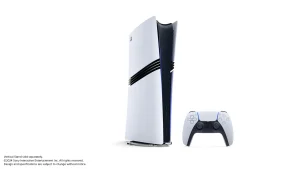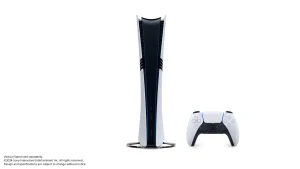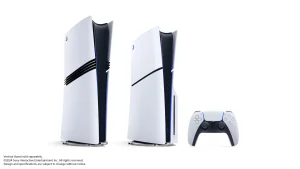Tech
iPhone 12 Pro vs. Note 20 Ultra cameras: Selfies, night mode, video compared – CNET

Lexy Savvides/CNET
On paper, the cameras on Apple’s new iPhone 12 Pro and Samsung’s Galaxy Note 20 Ultra seem similar. Both have a three-lens camera array with improved low-light performance, 4K HDR video capabilities and advanced autofocus systems. And while they both produce excellent results overall, they each have their strengths and weaknesses in different categories.
For zoom, it’s hard to compete with the Note 20 Ultra’s 5x telephoto camera, which can make any far-off subject look like it’s right in front of you, especially when you compare it to the 2x camera on the iPhone 12 Pro. For portraits, the iPhone generally produces the better result thanks to more natural bokeh (or blur) effects. But choosing an outright winner across every category is not so clear cut, given that both use a clever combination of hardware and computational photography tricks to get great-looking shots in almost all situations.
We put the cameras on two of this year’s best smartphones to the test to see how well they handle zoom photos, portraits, landscapes and video.
Read more: Note 20 Ultra vs. iPhone 11 Pro camera comparison
Great for landscapes, ultrawide and HDR photos
I took these phones to some of my favorite scenic spots around San Francisco and found they produced excellent results, whether I was snapping a foggy morning in Golden Gate Park or an epic sunset over the Pacific Ocean.
In well-lit situations, it’s hard to distinguish which phone took which photo, as the color, detail and dynamic range is excellent on both. For reference, I left the phones on default settings to best simulate the average person’s experience: Smart HDR on the iPhone 12 Pro turned on, as well as Scene Optimizer on the Note 20 Ultra. The improvements to high dynamic range on the iPhone 12 Pro, called Smart HDR 3, produce very balanced photos on the main rear camera. Side by side with the regular HDR mode on the Note 20 Ultra, shots look great and give very natural results as you can see in the comparison below.


Lexy Savvides/CNET
The iPhone 12 Pro also uses a computational photography technique called Deep Fusion on all its cameras to bring out texture and reduce noise. See the 100% crop on the image below from the main rear camera and you’ll see each is sharp and retains detail even in dimmer lighting conditions.
Read more: The best phone to buy for 2020


Lexy Savvides/CNET
The Note 20 Ultra’s main wide-angle rear camera has a 108-megapixel sensor that gives you scope to crop in and change your frame even after you’ve snapped the photo. You can also get more of a shallow depth of field on your shots without software tricks like portrait mode, thanks to that larger sensor. But sometimes, the depth of field effect (or the blurred background) was so shallow that I had to check to see if my photos were in focus after I snapped them. A technique called pixel binning on the Note ensures that photos taken at 12-megapixel resolution (active by default) look great, because all the detail from the 108-megapixel shot is consolidated into the 12-megapixel image — I usually take all my photos in this setting.
The ultrawide cameras on both phones are also fantastic in good lighting, although I did find that in more challenging lighting conditions, the iPhone 12 Pro’s produced a more balanced and well-saturated shot. The iPhone’s ultrawide lens also corrected better for distortion compared to the Note 20 Ultra which looked slightly warped at the edges, a characteristic of ultrawide lenses.
Zoom images are a clear win for the Note 20 Ultra
The Note 20 Ultra has a 5x optical zoom compared to the 2x optical on the iPhone 12 Pro, so it’s no surprise that the Note 20 Ultra produces better results in this category. With enough light, photos taken at 5x with the Note 20 Ultra look sharp and well balanced. Good quality zoomed-in shots meant I started using the phone zoom a lot more than I was expecting, particularly in situations when I couldn’t physically move closer to my subject like when I was capturing the sunset over Ocean Beach and didn’t want to walk onto the sand (or wade into the water).


A shot captured at 5x optical zoom on the Note 20 Ultra meant I could get closer to the sunset without having to walk onto the beach.
Lexy Savvides/CNET
The Note 20 Ultra also gives you the option to narrow in on your subject beyond 5x with a hybrid digital/optical zoom that can go from 10x all the way through 50x. Photos start to look pretty pixelated at the full 50x reach, but at 10x in good lighting conditions, the hybrid zoom still produced usable photos.
The iPhone 12 Pro on the other hand, maxes out at 2x optical and 10x digital zoom, but the 2x optical zoom looks sharper than the equivalent 2x digital zoom on the Note 20 Ultra. Even though the phone has a 5x optical zoom, it doesn’t use the telephoto camera to zoom in from 2x-4x, it uses digital zoom on the main wide camera.
Portrait mode: Better on the iPhone 12 Pro
Both phones give you the option to take portraits of just about anything with a blurred background effect. On the Note 20 Ultra it’s called Live Focus, and Portrait Mode on the iPhone 12.
Both phones did a good job of identifying the edges of the subject to figure out what to leave in focus, but the iPhone does a much better job of retaining shadow and highlight details in and my subjects generally looked sharper compared to the same shot on the Note 20 Ultra.
Even in less than ideal conditions, when my subject was backlit, both phones produced pleasing results. In the image below however, I prefer the golden glow from the iPhone and I was able to retain more details where the sun hits my hair.


Lexy Savvides/CNET
Selfies and night portraits
On the front camera, the iPhone’s white balance and exposure is more pleasing and matched my skin tone more accurately. The Note 20 Ultra washed out my skin tone and made my hair look darker. But with strong backlighting, the dynamic range is a bit wider on the Note 20 Ultra’s selfie camera for photos and videos.
The iPhone 12 Pro has an ace up its sleeve with night mode on portraits which keeps your subject sharp and well-lit even after the sun goes down. The Note 20 Ultra doesn’t have that option, so you either have to take a regular night photo without the blur, or use live focus mode and risk having your subject look dark and blurry.
Night mode photos are too close to call
The iPhone 12 Pro added night mode to its ultrawide and selfie camera so now all three cameras have better low light performance than earlier iPhones. The Note 20 Ultra also lets you use night mode across the board.
But the new lidar scanner on the back of the iPhone 12 Pro means that autofocus at night is super snappy and it feels faster than the laser autofocus system on the Note. The iPhone 12 Pro also has a slightly faster main camera with a maximum aperture of f1.6, which lets in more light than the f1.8 main camera on the Note 20 Ultra. In night shots, like in the image below, you can clearly see the advantage of having that wider f1.6 camera aperture. But for this photo, I actually preferred the inky blue sky produced by the Note, even if the image is a bit darker.


Lexy Savvides/CNET
Both phones produce great looking low-light shots, but if I had to pick a favorite, I am leaning toward the Note 20 Ultra as it produced a more consistent result in all the low-light photos that I took using the main wide camera. The iPhone 12 Pro often produced a brighter shot but the night mode result didn’t look as pleasing to me.
Video on the iPhone 12 Pro is tough to beat
I love the Pro video capabilities of the Note 20 Ultra, including its 8K recording. But the iPhone 12 Pro records better video overall. The picture profile is well-balanced, colors look realistic and focus in particular is very smooth. I filmed the video on this page entirely on the cameras of the iPhone 12 Pro and Note 20 Ultra so you can really see what they’re capable of.
The iPhone 12 Pro also gives you the option to record in Dolby Vision HDR, which looks fantastic when played back on the phone’s screen or a compatible display. A word of warning though, my retail iPhone 12 Pro shipped with HDR turned on in the camera settings, so unless you only want to play back video on your phone screen (or own a Dolby Vision-compatible TV for playback) you may want to turn this off for now, otherwise the video may not display correctly. The Note 20 Ultra can also record in HDR 10 Plus, although playback wasn’t quite as smooth at the same resolution and frame rate.
But if you’re looking to customize your video settings, the Note 20 Ultra has way more options to choose from in the default camera app than the iPhone 12 Pro. This includes a live focus video mode (at 1080p) that blurs the background behind your subject, the aforementioned 8K recording at 24 frames per second and Pro Mode that allows you to tweak the exposure, white balance and focus manually. There’s also an overwhelming number of resolutions, frame rates and aspect ratios to choose from.
Which phone has the better overall camera?
While they each excel at different categories, it’s hard to pick an outright winner as both phones are an absolute delight to use for photography. For the best zoom on a smartphone, the benefits of a larger image sensor and great low light shots, pick the Note 20 Ultra. But for the best of both worlds between still photos and video recording, the iPhone 12 Pro is a better match.
Don’t forget this is the first year that Apple’s iPhone Pro models will feature slightly different cameras. The iPhone 12 Pro Max, which goes on sale in November, adds additional features like a sensor-shift image stabilization system on the wide camera and 2.5x optical zoom, instead of 2x on the iPhone 12 Pro. We’ll be testing that phone against the Note 20 Ultra once it’s available.
Tech
How to Preorder the PlayStation 5 Pro in Canada

Sony has made it easy for Canadian consumers to preorder the PlayStation 5 Pro in Canada directly from PlayStation’s official website. Here’s how:
- Visit the Official Website: Go to direct.playstation.com and navigate to the PS5 Pro section once preorders go live on September 26, 2024.
- Create or Log in to Your PlayStation Account: If you don’t have a PlayStation account, you will need to create one. Existing users can simply log in to proceed.
- Place Your Preorder: Once logged in, follow the instructions to preorder your PS5 Pro. Ensure you have a valid payment method ready and double-check your shipping information for accuracy.
Preorder Through Major Canadian Retailers
While preordering directly from PlayStation is a popular option, you can also secure your PS5 Pro through trusted Canadian retailers. These retailers are expected to offer preorders on or after September 26:
- Best Buy Canada
- Walmart Canada
- EB Games (GameStop)
- Amazon Canada
- The Source
Steps to Preorder via Canadian Retailers:
- Visit Retailer Websites: Search for “PlayStation 5 Pro” on the website of your preferred retailer starting on September 26.
- Create or Log in to Your Account: If you’re shopping online, having an account with the retailer can speed up the preorder process.
- Preorder in Store: For those who prefer in-person shopping, check with local stores regarding availability and preorder policies.
3. Sign Up for Notifications
Many retailers and websites offer the option to sign up for notifications when the preorder goes live. If you’re worried about missing out due to high demand, this can be a useful option.
- Visit Retailer Sites: Look for a “Notify Me” or “Email Alerts” option and enter your email to stay informed.
- Use PlayStation Alerts: Sign up for notifications directly through Sony to be one of the first to know when preorders are available.
4. Prepare for High Demand
Preordering the PS5 Pro is expected to be competitive, with high demand likely to result in quick sellouts, just as with the initial release of the original PS5. To maximize your chances of securing a preorder:
- Act Quickly: Be prepared to place your order as soon as preorders open. Timing is key, as stock can run out within minutes.
- Double-Check Payment Information: Ensure your credit card or payment method is ready to go. Any delays during the checkout process could result in losing your spot.
- Stay Informed: Monitor PlayStation and retailer websites for updates on restocks or additional preorder windows.
Final Thoughts
The PlayStation 5 Pro is set to take gaming to the next level with its enhanced performance, graphics, and new features. Canadian gamers should be ready to act fast when preorders open on September 26, 2024, to secure their console ahead of the holiday season. Whether you choose to preorder through PlayStation’s official website or your preferred retailer, following the steps outlined above will help ensure a smooth and successful preorder experience.
For more details on the PS5 Pro and to preorder, visit direct.playstation.com or stay tuned to updates from major Canadian retailers.
Tech
Introducing the PlayStation 5 Pro: The Next Evolution in Gaming

Since the PlayStation 5 (PS5) launched four years ago, PlayStation has continuously evolved to meet the demands of its players. Today, we are excited to announce the next step in this journey: the PlayStation 5 Pro. Designed for the most dedicated players and game creators, the PS5 Pro brings groundbreaking advancements in gaming hardware, raising the bar for what’s possible.
Key Features of the PS5 Pro
The PS5 Pro comes equipped with several key performance enhancements, addressing the requests of gamers for smoother, higher-quality graphics at a consistent 60 frames per second (FPS). The console’s standout features include:
- Upgraded GPU: The PS5 Pro’s GPU boasts 67% more Compute Units than the current PS5, combined with 28% faster memory. This allows for up to 45% faster rendering speeds, ensuring a smoother gaming experience.
- Advanced Ray Tracing: Ray tracing capabilities have been significantly enhanced, with reflections and refractions of light being processed at double or triple the speed of the current PS5, creating more dynamic visuals.
- AI-Driven Upscaling: Introducing PlayStation Spectral Super Resolution, an AI-based upscaling technology that adds extraordinary detail to images, resulting in sharper image clarity.
- Backward Compatibility & Game Boost: More than 8,500 PS4 games playable on PS5 Pro will benefit from PS5 Pro Game Boost, stabilizing or enhancing performance. PS4 games will also see improved resolution on select titles.
- VRR & 8K Support: The PS5 Pro supports Variable Refresh Rate (VRR) and 8K gaming for the ultimate visual experience, while also launching with the latest wireless technology, Wi-Fi 7, in supported regions.
Optimized Games & Patches
Game creators have quickly embraced the new technology that comes with the PS5 Pro. Many games will receive free updates to take full advantage of the console’s new features, labeled as PS5 Pro Enhanced. Some of the highly anticipated titles include:
- Alan Wake 2
- Assassin’s Creed: Shadows
- Demon’s Souls
- Dragon’s Dogma 2
- Final Fantasy 7 Rebirth
- Gran Turismo 7
- Marvel’s Spider-Man 2
- Ratchet & Clank: Rift Apart
- Horizon Forbidden West
These updates will allow players to experience their favorite games at a higher fidelity, taking full advantage of the console’s improved graphics and performance.






Design & Compatibility
Maintaining consistency within the PS5 family, the PS5 Pro retains the same height and width as the original PS5 model. Players will also have the option to add an Ultra HD Blu-ray Disc Drive or swap console covers when available.
Additionally, the PS5 Pro is fully compatible with all existing PS5 accessories, including the PlayStation VR2, DualSense Edge, Pulse Elite, and Access controller. This ensures seamless integration into your current gaming setup.
Pricing & Availability
The PS5 Pro will be available starting November 7, 2024, at a manufacturer’s suggested retail price (MSRP) of:
- $699.99 USD
- $949.99 CAD
- £699.99 GBP
- €799.99 EUR
- ¥119,980 JPY
Each PS5 Pro comes with a 2TB SSD, a DualSense wireless controller, and a copy of Astro’s Playroom pre-installed. Pre-orders begin on September 26, 2024, and the console will be available at participating retailers and directly from PlayStation via direct.playstation.com.
The launch of the PS5 Pro marks a new chapter in PlayStation’s commitment to delivering cutting-edge gaming experiences. Whether players choose the standard PS5 or the PS5 Pro, PlayStation aims to provide the best possible gaming experience for everyone.
Preorder your PS5 Pro and step into the next generation of gaming this holiday season.
Tech
Google Unveils AI-Powered Pixel 9 Lineup Ahead of Apple’s iPhone 16 Release
Google has launched its next generation of Pixel phones, setting the stage for a head-to-head competition with Apple as both tech giants aim to integrate more advanced artificial intelligence (AI) features into their flagship devices. The unveiling took place near Google’s Mountain View headquarters, marking an early debut for the Pixel 9 lineup, which is designed to showcase the latest advancements in AI technology.
The Pixel 9 series, although a minor player in global smartphone sales, is a crucial platform for Google to demonstrate the cutting-edge capabilities of its Android operating system. With AI at the core of its strategy, Google is positioning the Pixel 9 phones as vessels for the transformative potential of AI, a trend that is expected to revolutionize the way people interact with technology.
Rick Osterloh, Google’s senior vice president overseeing the Pixel phones, emphasized the company’s commitment to AI, stating, “We are obsessed with the idea that AI can make life easier and more productive for people.” This echoes the narrative Apple is likely to push when it unveils its iPhone 16, which is also expected to feature advanced AI capabilities.
The Pixel 9 lineup will be the first to fully integrate Google’s Gemini AI technology, designed to enhance user experience through more natural, conversational interactions. The Gemini assistant, which features 10 different human-like voices, can perform a wide array of tasks, particularly if users allow access to their emails and documents.
In an on-stage demonstration, the Gemini assistant showcased its ability to generate creative ideas and even analyze images, although it did experience some hiccups when asked to identify a concert poster for singer Sabrina Carpenter.
To support these AI-driven features, Google has equipped the Pixel 9 with a special chip that enables many AI processes to be handled directly on the device. This not only improves performance but also enhances user privacy and security by reducing the need to send data to remote servers.
Google’s aggressive push into AI with the Pixel 9 comes as Apple prepares to unveil its iPhone 16, which is expected to feature its own AI advancements. However, Google’s decision to offer a one-year free subscription to its advanced Gemini Assistant, valued at $240, may pressure Apple to reconsider any plans to charge for its AI services.
The standard Pixel 9 will be priced at $800, a $100 increase from last year, while the Pixel 9 Pro will range between $1,000 and $1,100, depending on the model. Google also announced the next iteration of its foldable Pixel phone, priced at $1,800.
In addition to the new Pixel phones, Google also revealed updates to its Pixel Watch and wireless earbuds, directly challenging Apple’s dominance in the wearable tech market. These products, like the Pixel 9, are designed to integrate seamlessly with Google’s AI-driven ecosystem.
Google’s event took place against the backdrop of a significant legal challenge, with a judge recently ruling that its search engine constitutes an illegal monopoly. This ruling could lead to further court proceedings that may force Google to make significant changes to its business practices, potentially impacting its Android software or other key components of its $2 trillion empire.
Despite these legal hurdles, Google is pressing forward with its vision of an AI-powered future, using its latest devices to showcase what it believes will be the next big leap in technology. As the battle for AI supremacy heats up, consumers can expect both Google and Apple to push the boundaries of what their devices can do, making the choice between them more compelling than ever.
-

 Sports23 hours ago
Sports23 hours agoCanada’s Stakusic, partner Savinykh lose in doubles quarterfinals at Guadalajara Open
-

 News4 hours ago
News4 hours agoRCMP say 3 dead, suspects at large in targeted attack at home in Lloydminster, Sask.
-

 News24 hours ago
News24 hours agoSouthern Baptist trustees back agency president but warn against needless controversy
-

 News4 hours ago
News4 hours agoNova Scotia adopts bill declaring domestic violence in the province an epidemic
-
News13 hours ago
Local Toronto business story – Events Industry : new national brand, Element Event Solutions
-

 News14 hours ago
News14 hours agoReggie Bush was at his LA-area home when 3 male suspects attempted to break in
-

 News3 hours ago
News3 hours agoB.C. to scrap consumer carbon tax if federal government drops legal requirement: Eby
-

 News3 hours ago
News3 hours agoHall of Famer Joe Schmidt, who helped Detroit Lions win 2 NFL titles, dies at 92




















